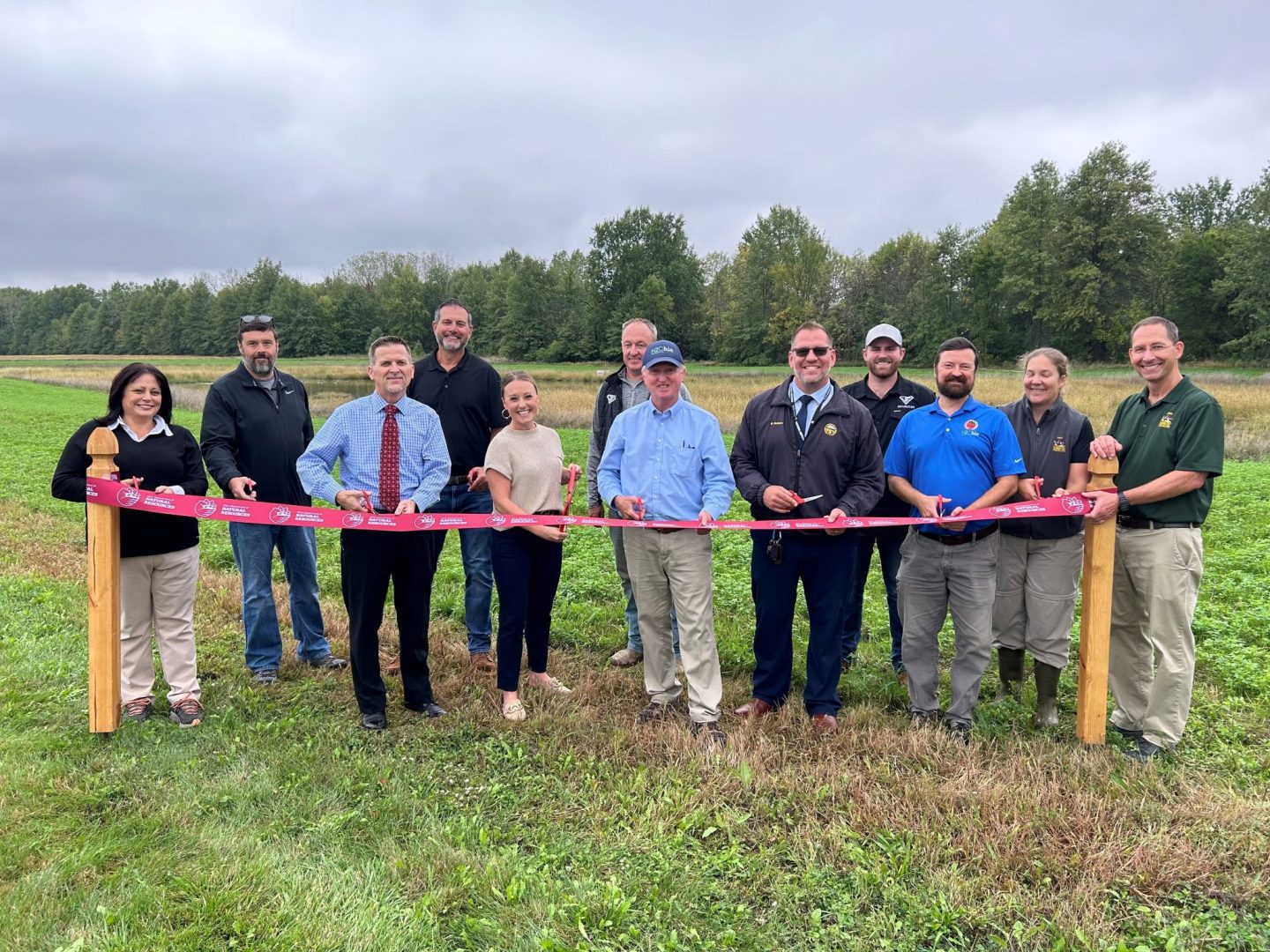As part of Governor Mike DeWine’s H2Ohio initiative, the Ohio Department of Natural Resources (ODNR) celebrated the completion of the Baughman H2Ohio Wetland Restoration Project with a ribbon-cutting ceremony today.
The Baughman H2Ohio wetland project restores 19 acres of wetlands, which will filter sediment and nutrients from the water before it flows into the Maumee River Watershed. The newly completed wetland will also address significant flooding issues that previously impacted nearby neighborhoods. Reducing nutrient and sediment loads in the Maumee River Watershed is critical to addressing harmful algal blooms in the Western Lake Erie Basin.

ODNR celebrated the completion of the Baughman H2Ohio Wetland Restoration Project with a ribbon-cutting ceremony.
“Wetlands are vital to our overall H2Ohio plan to improve water quality in Lake Erie,” said Governor DeWine. “We are committed to completing these important projects that we know will have positive impacts on the waterways and surrounding communities.”
The Baughman H2Ohio project was completed through collaboration with several partners including Allen County Drainage Engineer’s Office, Allen Oakwood Correctional Institution, America Township Trustees and the U.S. Environmental Protection Agency’s (U.S. EPA) Great Lakes Restoration Initiative (GLRI). The project was completed with the use of federal, H2Ohio funds, and local funds.

The Baughman H2Ohio Project restored 19 acres of wetland.
“Partners are key to ensuring these projects go from an idea to completion,” said ODNR Director Mary Mertz. “It’s all about collaboration and making sure that communities know the value of wetlands. The impact can be felt in our streams and rivers, wildlife habitat, as well as local neighborhoods.”
In addition to the wetland restoration, 11,000 feet of drainage tile were installed throughout the area to capture stormwater and redirect it to the wetlands for water quality treatment. This will assist in addressing flooding, while improving water quality overall.
“By detaining storm water, the wetland provides an environmental benefit of nutrient reduction to Lake Erie, as well as reducing flooding impacts to residents,” said Teresa Seidel, Director of the EPA’s Great Lakes National Program Office. “The contribution of both H2Ohio funds and GLRI funding greatly increased the affordability of this project for the community that will benefit from this work. The EPA will continue to support projects like these that reduce stormwater and nutrient runoff to prevent harmful algal blooms in the western basin of Lake Erie.”
H2Ohio is Governor DeWine’s statewide water quality initiative designed to address complex issues impacting Ohio’s waters. Launched in 2019, H2Ohio uses a comprehensive approach guided by science and data to reduce algal blooms, stop pollution, and improve access to clean drinking water by supporting best farming practices, road salt runoff reduction, litter cleanup, dam removal, land conservation, and water infrastructure revitalization. For more information visit h2.ohio.gov.

Recent Comments